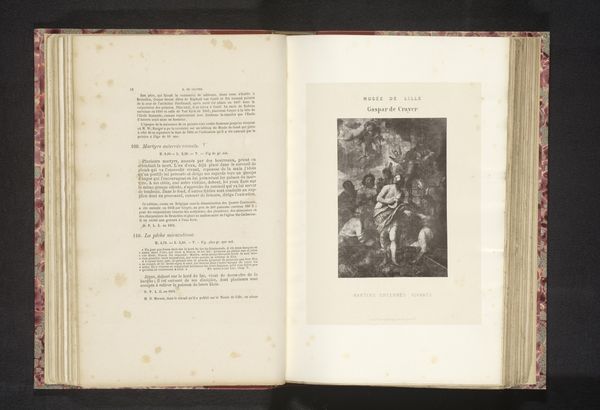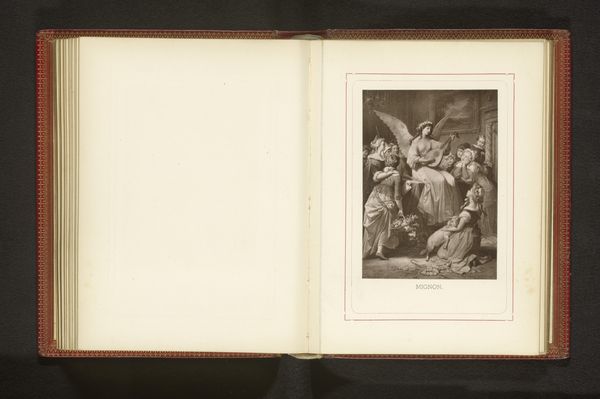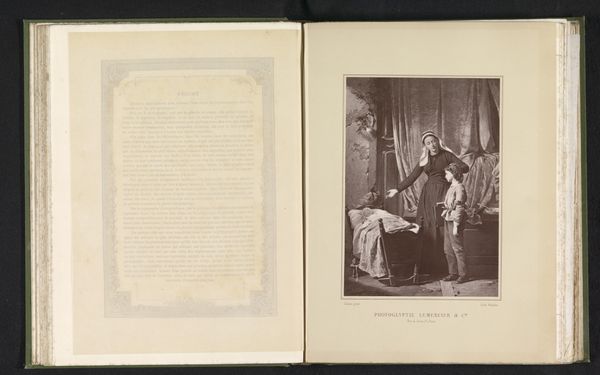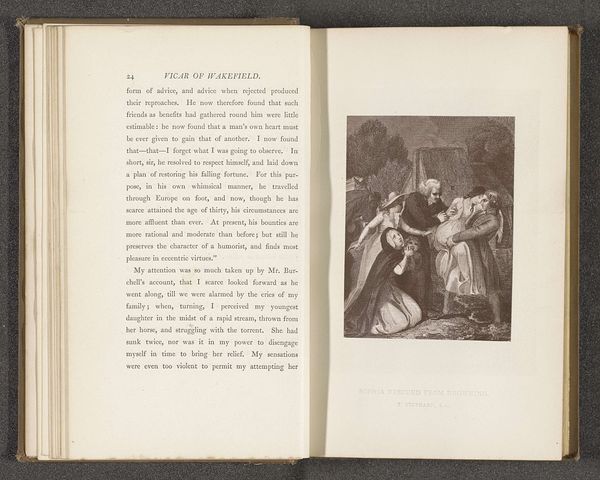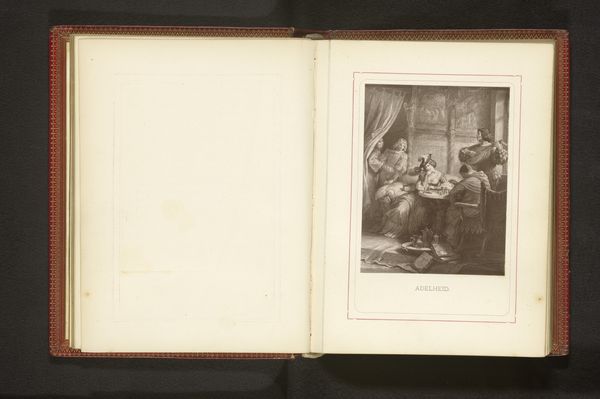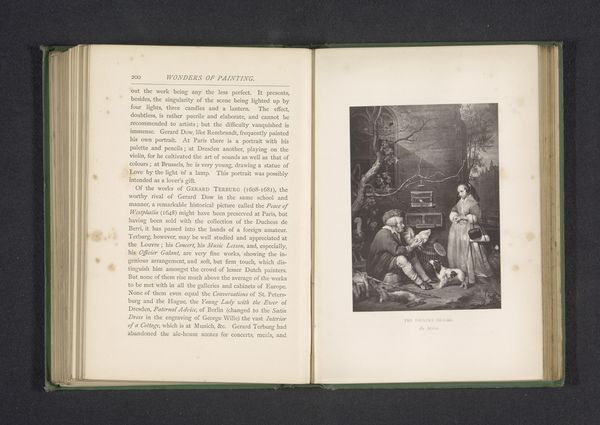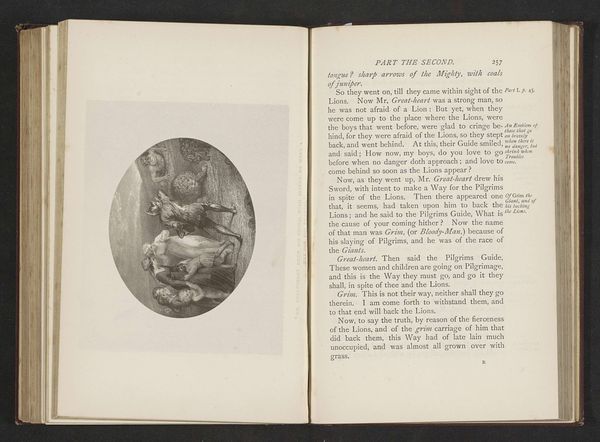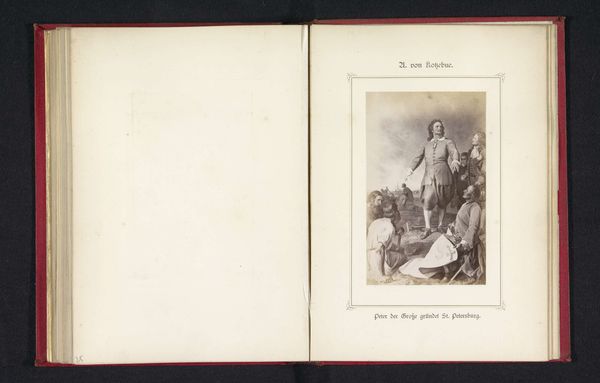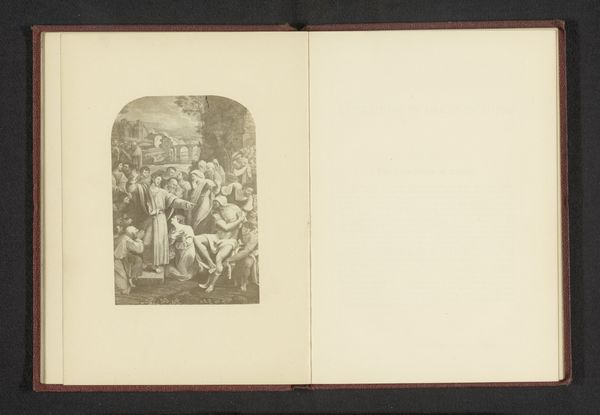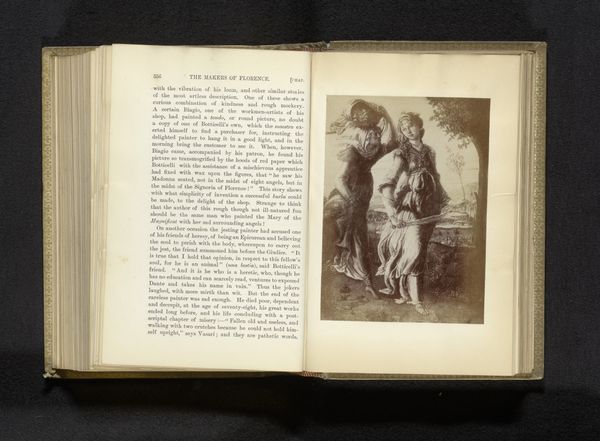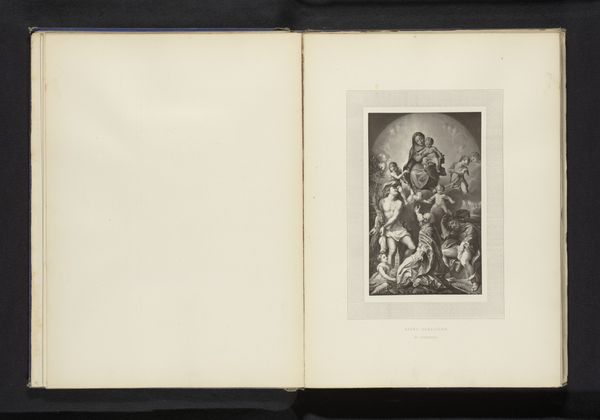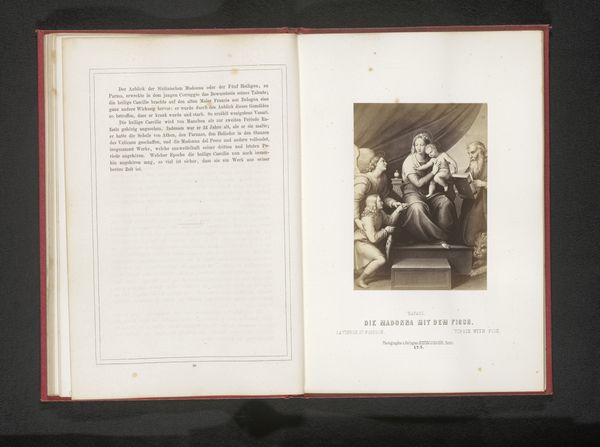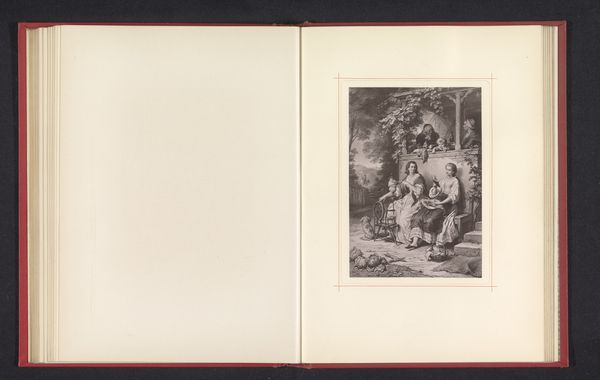
Fotoreproductie van een schilderij van de uitwijzing van Hagar en Ismaël door Adrian van der Werff before 1864
0:00
0:00
print, photography, albumen-print
#
narrative-art
# print
#
11_renaissance
#
photography
#
coloured pencil
#
history-painting
#
albumen-print
Dimensions: height 130 mm, width 103 mm
Copyright: Rijks Museum: Open Domain
Curator: Oh, the melancholy here! It's heavy, isn't it? Like dust motes dancing in a forgotten room. Editor: Indeed. This albumen print captures a photograph of Adrian van der Werff’s painting, “The Expulsion of Hagar and Ishmael,” taken before 1864. The original painting illustrates a moment from the Book of Genesis, a difficult chapter on family and abandonment. Curator: Abandonment hangs in the air, thick as the gathering storm in the background. Look at Hagar’s face – resignation mixed with raw terror for her son. I feel the story etched onto her skin, like a tragic poem. It almost feels wrong looking at this painful, dramatic, expulsion! Editor: What interests me most is this moment in its journey from canvas to print, how photography was used to disseminate artworks, democratizing access but also inevitably altering the viewer's experience through reproduction and circulation. The black and white image brings gravitas to a biblical tragedy; a formal style to render its narrative, lending legitimacy through technological modernity. Curator: Modernity filtered through myth...I see what you mean. Does it almost... distance us from the heart of the matter, sanitize it? Editor: It certainly reframes the experience of viewing. Mass dissemination through images could, for the Victorians, simultaneously underscore the universality of moral lessons and create a sense of shared cultural values. This makes one wonder about how photographs are manipulated now! The staged quality is a key part of understanding this type of photograph within Victorian culture, emphasizing constructed representations of ideal virtue or moral consequence. Curator: Perhaps it's a way to confront shadows without truly entering the darkness, if that makes sense. Gazing into these photographs—aren’t we all searching for glimpses of truth, a flash of recognition in the faces of strangers, lost moments immortalized? It is melancholic though. Editor: This photograph exemplifies art's entanglement with evolving social narratives and technologies. It's more than just the documentation; the choices reflect the values of the time and shift with each reproduction. I’m left pondering how these historic reproductions can affect current perspectives on the complex subjects presented. Curator: So perhaps looking closer opens our minds, not to answers necessarily, but to ask better questions about truth, images, morality and stories themselves. And family struggles - past and present, biblical and banal.
Comments
No comments
Be the first to comment and join the conversation on the ultimate creative platform.
